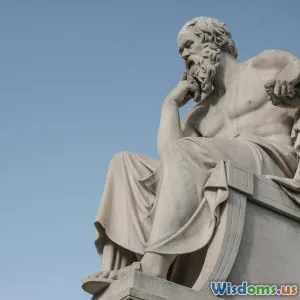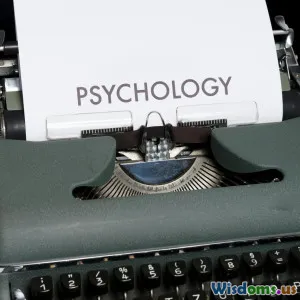
Analysis The Challenges of Defining Object Identity
14 min read Explore the intricate philosophical, practical, and technological challenges of defining object identity across contexts, with rich examples from science, law, and computer science. (0 Reviews)
Analysis: The Challenges of Defining Object Identity
Introduction
Imagine finding a ship in a museum boldly titled “The Ship of Theseus.” Each plank has been replaced over centuries, yet it claims continuity with the original vessel that sailed ancient Greek seas. Is it truly the same ship—the Ship of Theseus? How do we decide what makes an object ‘the same’ through time, change, or duplication? This seemingly abstract quandary surfaces across philosophy, science, tech, law, and everyday life, lurking beneath questions that shape our world: When can a cloned sheep claim the identity of its original? At what point does a repaired laptop stop being ‘yours’ and become something new?
Defining object identity is central to debates about consciousness, ethics, artificial intelligence, and the fabric of reality. Yet, each attempt at a universal answer uncovers new complexities. In this article, we’ll dissect why object identity is so hard to pin down. We’ll journey through philosophical puzzles, explore technological ramifications, and see how legal systems wrestle with these age-old challenges. Along the way, we’ll reveal why this elusive concept is vital to disciplines far beyond philosophy—and why it should matter to everyone.
The Foundations: What Is Object Identity?
The Core Concept
Object identity refers to the criteria by which we judge whether two entities—across time, space, or changing circumstances—are truly ‘the same’ object, or merely similar instances. This apparently simple notion underpins our thinking about anything from personal identity (“Am I the same person over years?”) to digital security (keeping your online accounts safe).
Identity Versus Equality
In everyday language, we often blur object identity with equality. For example, two brand-new smartphones of the same model are equal in specification, but only one is your phone. They are not identical in the sense of being the same continuous object.
In logic and computer science, this distinction is formalized:
- Identity (‘===’ in some programming languages): Both references point to the exact same instance.
- Equality (‘==’): Different instances may share equivalent properties but are not the same entity.
This nuance is crucial, but rarely considered outside specialized fields.
Philosophical Challenges: The Ship of Theseus and Beyond
The Ship of Theseus Paradox
The Ship of Theseus is one of philosophy’s oldest and most cited thought experiments. As the ship’s boards are replaced one by one, at which point—if any—does it cease being Theseus’ original ship? This problem highlights three main criteria commonly proposed for object identity:
- Physical Continuity: Is it the same object if it consists of the same atoms?
- Structural/Formal Continuity: Does maintaining overall structure or function preserve identity?
- Spatiotemporal Continuity: Is the path an object traces through time and space what matters?
Each answer yields counterintuitive results:
- If identity resides only in physical particles, none of us are ever the same for long (since our bodies constantly exchange atoms with the environment).
- If it’s form or function, what if the materials change but the arrangement stays?
- If we insist on unbroken history (spatiotemporal paths), what about Star Trek-style teleportation where an object is taken apart and reassembled elsewhere?
As philosopher David Wiggins notes, “No sooner is one account of identity advanced than new cases arise that appear to force its revision.”
Abstraction and Everyday Life
While the Ship of Theseus is an abstraction, we routinely face such dilemmas:
- You replace your car’s engine, doors, and tires over several years. Is it still “your” car?
- A childhood favorite teddy bear is dutifully patched and re-stuffed. Does it retain sentimental identity?
In each, identity is negotiated—a mix of physical, functional, and psychological criteria, rarely strictly defined.
Humans as Objects: The Problem Multiplies
Applying the question to living beings makes things messier. For example, John Locke asked: If a prince’s consciousness entered a cobbler’s body (switching minds), who is who? This forms the basis of modern debates on psychological continuity and personal identity.
Scientific and Technological Perspectives
Biology: The Living Ship of Theseus
In biology, object identity plays out strikingly:
- Cellular Turnover: After a several-year span, nearly all of our body's cells have been replaced. Yet, we think of ourselves as a single, persisting being.
- Clone Identity: Consider Dolly the Sheep. Is a genetically identical clone a continuation of its parent sheep or a distinct individual?
- Regeneration: Some animals (like Planaria worms) regrow their bodies from tiny fragments. Is the resulting worm the ‘old’ individual?
Scientists lean toward a blend of continuity of structure, function, and information. Still, boundaries are fuzzy: at which point does healing, replacement, or cloning cross from mere repair/maintenance into making an entirely new object?
Computer Science: Identity in Digital Systems
In digital realms, the challenge is just as thorny:
-
Objects in Programming: Many languages distinguish between two variables that reference the same object (
a = b) and two independent but identical objects with the same data. Bugs often arise when programmers conflate object identity with value equality. -
Databases: In information systems, a unique identifier (like a primary key in a database) enforces identity. Yet, what if a record is deleted and recreated with the same identifier? Marble notebooked systems like blockchains attempt to provide unique, irreversible object identities, but run into challenges with upgrades, forks, and temporal dynamics of data.
-
Digital Twins and Digital Identity: In fields such as Industry 4.0, ‘digital twin’ refers to the precise digital representation of a physical asset. This raises key issues: if both the physical asset and its twin are updated or diverge, which is ‘real’? Can identity persist if the underlying code or model changes over time?
David Chalmers, philosopher and AI theorist, writes, “Once entities become abstract—defined more by information than atoms—the challenge of identity becomes abstract too. It’s not just what something is, but how it connects across time and transformation.”
Artificial Intelligence: Replication and Emergence
Can one ‘copy’ an AI and have it retain its original identity? Consider these real-world scenarios:
- Cloud Migration: Copying a digital AI agent from one server to another. Is the new instantiation the same AI or a mere duplicate?
- Training and Versioning: As machine learning models evolve, does an updated model retain the identity of its prior version?
These quandaries underlie debates about consciousness, personality, and accountability in AI. They also provide fertile ground for science fiction, philosophically explored in stories like Black Mirror’s “San Junipero” or Ted Chiang’s “The Lifecycle of Software Objects.”
Legal and Social Implications
Law: Ships, Cars, and Identifiers
Legal systems often have to render judgements on object identity:
- Salvage Law: In maritime salvage, ownership can hinge on whether a recovered ship is ‘the same’ as the registered vessel.
- Vehicle VIN Numbers: The identity of a car in legal systems is usually bound to its Vehicle Identification Number. Swap enough parts, and automobile fraud or confusion can result if legal identity isn’t tracked appropriately.
- Intellectual Property: When is a derivative work ‘the same’ as the original? In copyright and patent law, tracing identity is essential but often ambiguous.
Identity Crimes and Security
Identity theft exploits the separation between a persisting digital or legal identifier and the actual person or object it represents. Online, a simple change in credentials can ‘move’ your legal or digital identity to someone else—posing practical challenges for security systems trying to prove object (or personal) identity.
Social Implications: Memory, Brand, and Reputation
Socially, object identity extends to brands, products, and even reputation:
- Brand Consistency: How does Coke retain its identity through changing formulas, packaging, and corporate restructuring?
- Reputation and Societies: The identity of a company or institution often survives staff turnover. What anchors such collective identity?
These examples demonstrate that social object identity is tied not solely to material or legal continuity, but also narrative, memory, and shared belief.
Toward Solutions: Partial Answers and Persistent Questions
Practical Approaches
Different fields have developed workable criteria for object identity that suit practical needs:
- Unique Identifiers: Serial numbers, DNA sequences, and digital fingerprints. Easy to administer, but vulnerable to cloning and counterfeiting.
- Continuous History: Blockchain’s ‘immutable’ records tie object identities to uninterrupted chains of data. However, practical forks and rollbacks challenge this model.
- Multi-factor Identity: In both law and computing, multi-factor identifiers—combining physical attributes, history, metadata—provide more robust but still imperfect solutions.
No universal answer fits every context, but these methods illustrate ongoing efforts to manage identity’s slipperiness where absolute certainty is not achievable.
The Philosophy Persists
Each practical solution reveals boundary cases:
- A phone with a swapped motherboard: same serial number, different ‘heart.’ Is it really the same device?
- A company that sells its assets, brand name, and reputation but replaces every original employee.
As philosopher Derek Parfit argued, “Identity is not what matters” as much as continuity and psychological connectedness. In many situations, enough similarity and relation across time is taken as sufficient for practical identity, even where theoretical puzzles remain.
Conclusion: The Value of Uncertainty
To define object identity is to probe the limits of how we carve up reality, both conceptually and practically. From ancient Greek ships, to genes and software, our efforts reveal that ‘being the same’ is not just a static relation, but a story we construct depending on context, use, and perspective.
Embracing the ambiguity of object identity may seem unsettling, but it’s a creative force. It drives advances in law, technology, and cognition by pushing us to clarify what really matters: Function or matter? History or memory? Form or substance? Knowing there’s rarely a final answer helps us craft more flexible, thoughtful criteria—suited to a world in permanent flux.
Next time you replace your phone’s screen, patch a favorite jacket, or debate the ‘authenticity’ of a digital artwork, remember: identity is more dynamic—and more vital—than it first appears, offering a fascinating lens on modern life, from the philosophical to the everyday.
Rate the Post
User Reviews
Popular Posts

















